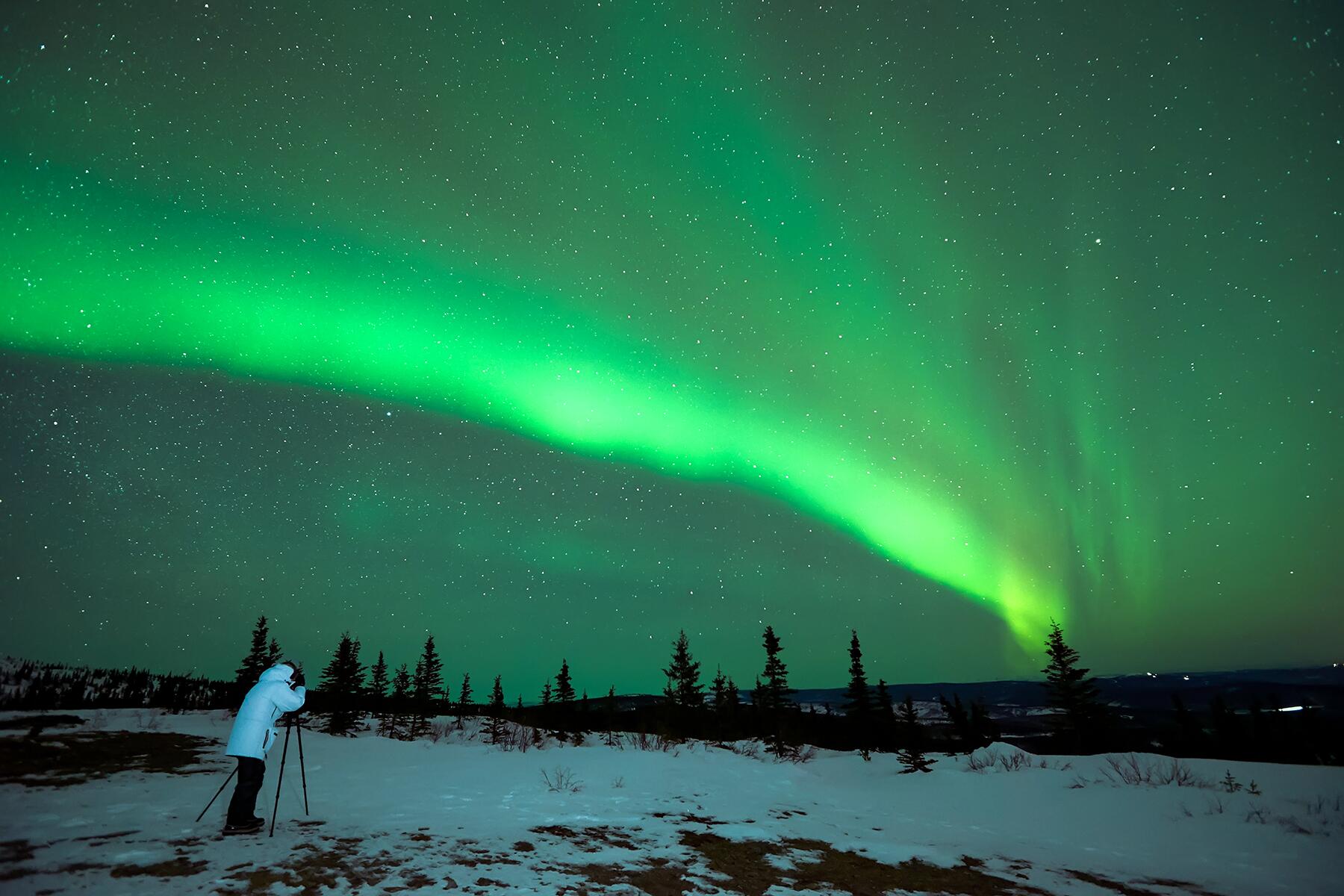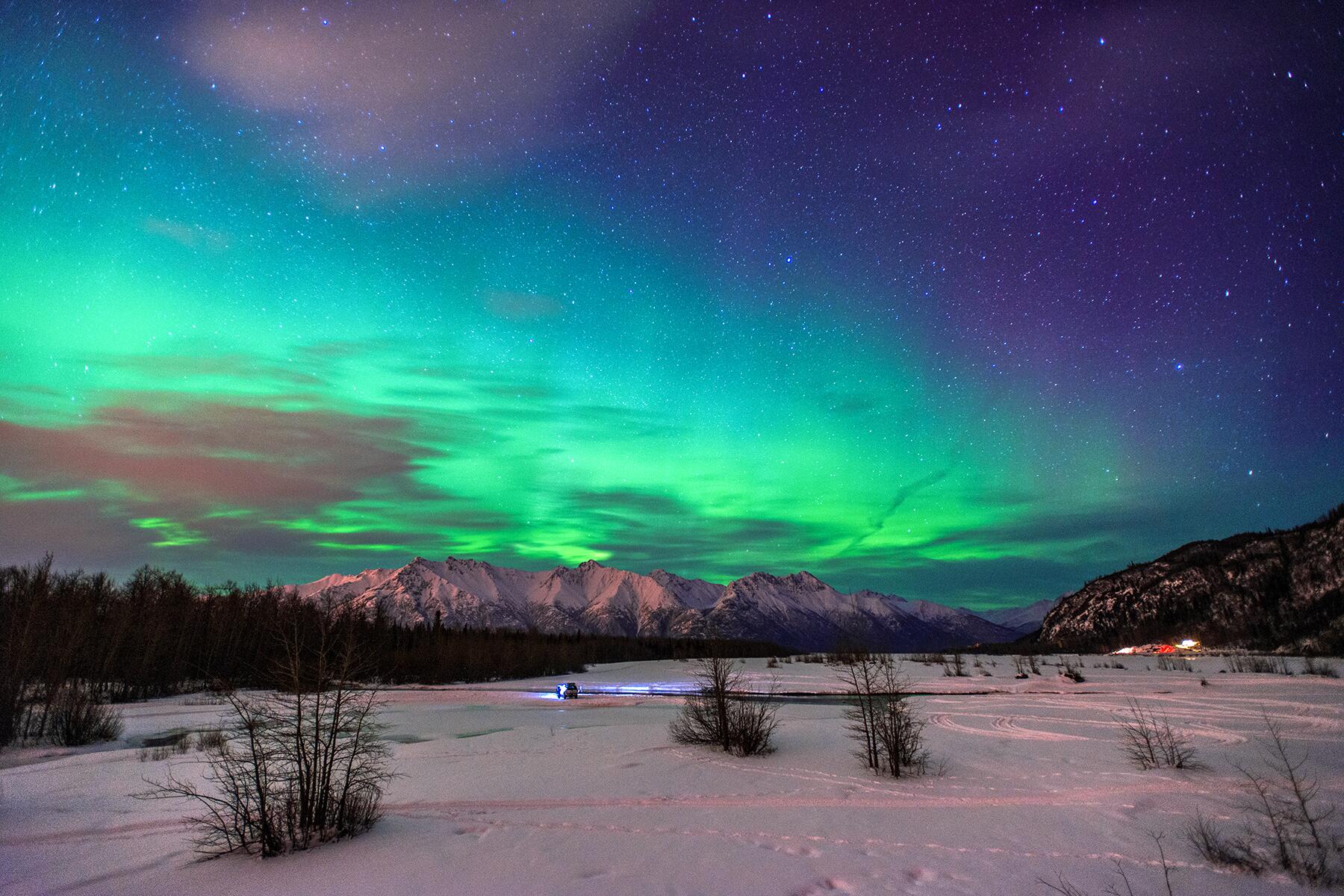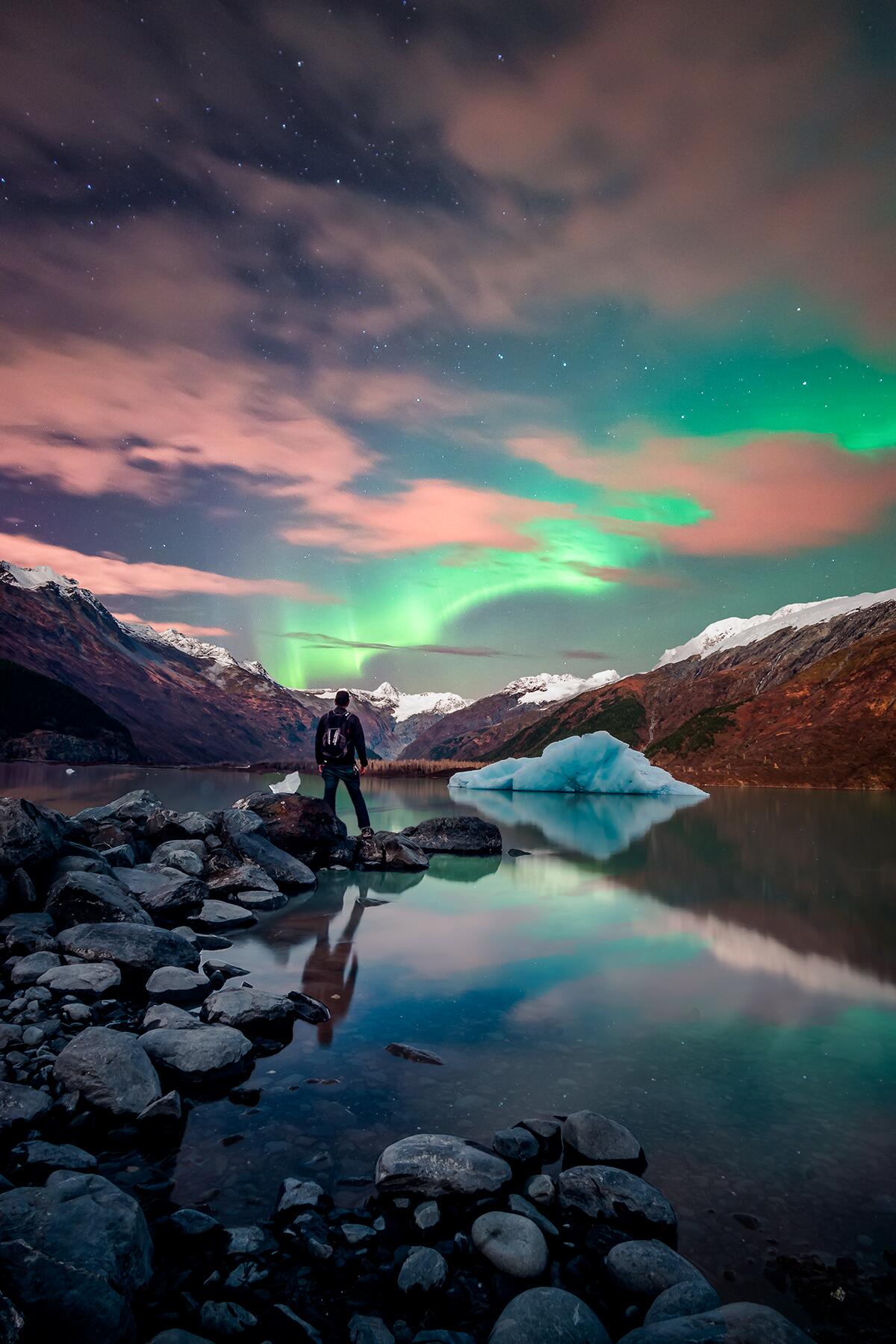Be ready to stay up all night—the Northern Lights could come out at any time.
Huddled atop Cleary Summit, 20 miles north of Fairbanks, Alaska, we waited. It was just after 1 a.m. and at this higher elevation, with few trees to protect us from the cold winds coming from the Arctic, we felt every bit of subzero temperature. Still, the sky was clear and the likelihood we’d see the elusive aurora borealis was high. With any luck, we’d soon see gyrating ribbons of emerald, fuchsia, and violet luminescence paint the night sky.
Fairbanks sits smack in the middle of the auroral oval, a belt that encircles the northernmost latitudes where sightings of the auroras, otherwise known as the northern lights, are most common. Explore Fairbanks estimates that the nighttime show is visible 80 percent of the time, but that’s only if there aren’t clouds and the sky is dark enough.
We (myself, as well as other travelers on an aurora hunting expedition with Salmonberry Tours) had a few false flags already—wispy clouds and tricks of light that brought camera viewfinders to eyes, but no worthy shots to the screen.
It’s impossible to say when, or if, the evasive lights will make their appearance. While on this particular day the Kp Index, a scale of zero to nine that scientists use to grade the probability of a sighting, listed the likelihood at a promising 5, it was far from a guarantee that the aurora would make use of her starry canvas.
Recommended Fodor’s Video

Don Hampton, a Research Associate Professor who studies the aurora and the upper atmosphere with the Geophysical Institute at the University of Alaska Fairbanks, helped explain what causes the nocturnal spectacle. He says, essentially, the aurora starts when a solar storm kicks electrically charged protons and electrons towards our planet on a solar wind. When the wind runs into the Earth’s magnetic field, the energy is attracted to the poles (hence why Earth gets both northern and southern lights), where, in the upper reaches of our atmosphere, it reacts by releasing energy. That energy is what causes the auroras and the shimmering show we’d been hoping for.
There are a couple of elements, Hampton said, that modulate how often, and how well, we see the aurora. A large part of it has to do with how active the sun is. More particles coming off the sun should mean better displays. However, the power behind the solar wind plays its part too: Lighter breezes will transport far fewer protons and electrons than a strong gust.
Granted, the sun also goes through an 11-year cycle of solar maxim and solar minimum that also dictates how riotous the performances are. It’s easiest to think of it as a clock: Activity is higher at the top of the hour and lower at the bottom. In 2021 we’re coming out of solar minimum, the lower end of the spectrum, where the lights are generally less active. Hampton explained that the lights should next be extremely active in 2024 and 2025 when the cycle is back at its peak.
When asked if he had any tips for spotting the northern lights, even in slower years, Hampton said, “Be ready to stay up all night—they could come out at any time.” He added that sometimes the sun will go down and the aurora will come out, but generally speaking in Alaska, the polar lights don’t often come out before midnight.
Still, the Geophysical Institute is able to release forecasts more than three weeks out to help auroral hunters get their trophy photos. While they can’t say for sure that you will see the northern lights, they can make estimations based on the hotspots they can see on the sun. Because the hotspots that emit the particles that become the aurora last a few rotational cycles (the sun rotates every 27 days), where there was a hotspot previously, there’s likely to be one again the next go around, so it gives the scientists a decent idea.
After a while, I retreated to the warming hut (Salmonberry Tours has an exclusive partnership with Ski Land Ski Resort to use their property for aurora hunting) to thaw myself out. Just as wrapped by nearly frozen hands around a cup of hot chocolate, someone threw open the door and declared: “They’re here.”

Outside a single jade river had carved a sinuous path through the heavens, oscillating like a recently plucked guitar string. After a few moments of excited chatter, the only sound was the rapid clicking of camera shutters—all attention was granted to the ethereal glow before us.
“Psst,” our guide said, breaking the silence several minutes later. “Look behind you.”
Because we had all been laser-focused on the serpentine light path to the south, we hadn’t noticed the backup choir of incandescence that had taken the stage north. There, a handful of streamers of light pirouetted across the ether. As the minutes marched on, their ranks grew. Soon it was a kaleidoscopic fête of shamrock-colored light.
And then, all too soon, the performers exited the stage and the curtain fell. The lights had turned off, leaving us with just images in our mind, photos on our camera memory cards, and a burning desire to stand out in the cold to do it all again, just for a few more moments of galactic majesty.





